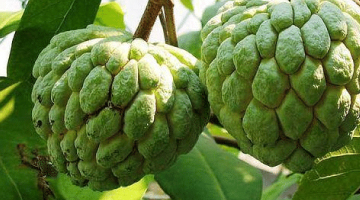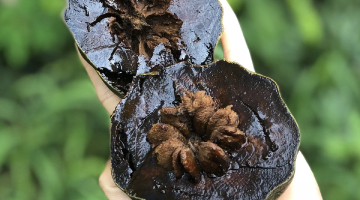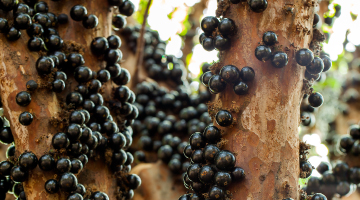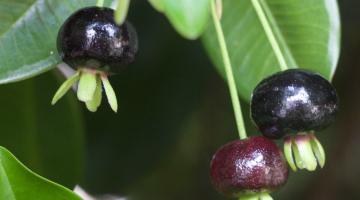Custard Apple

Native to the tropics of the Americas, custard apples prefer subtropical to tropical conditions. The tree will produce fruit that has a sweet fruity fragrance and delicious soft white pulp. You can pick the fruit when firm and let it ripen at room temperature on your kitchen bench. Fruit can be eaten fresh, or you can blend the flesh with ice cream for a delicious desert. Trees can be semi deciduous and heavy bearing. Self-pollinating. Sensitive to frost.
Black Sapote

Native to Mexico and commonly known as the chocolate pudding fruit. This fruit is low in fat and has high quantities of Vitamin C. It is also a member of the persimmon family. Features rounded fruit with thin olive-green skin. The pulp is black/brown when ripe. Blend the flesh with milk for great tasting chocolate shake, it can also be cooked in cakes and used for jam making. The fruit does not ripen on the tree, pick the fruit when it is firm and allow to ripen off the tree. It is ready to pick when the calyx (flower remnant at the stem) lifts completely away from the fruit. Generally ripening occurs over 5 – 10 days, and the outer skin will darken and go soft. Must be eaten very ripe and soft, otherwise it can have an astringent flavour. Once ripe, scoop out pulp and discard seeds. Harvest time is generally August – December.
Jaboticaba

A slow growing, bushy tree native to Brazil. Growing up to 12 metres in its native environment, but more commonly seen here in Australia at less than half this size. Light frosts are tolerated, but growth slows when enduring prolonged cold periods. The fruit matures 20-30 days after flowering and will keep in the fridge for 1-2 weeks. The fruit possesses a thin tough edible skin and has a very translucent, milky white pulp with a pleasant grape-like flavour. Fruit can be eaten fresh, or used in jams, jellies, syrup, cakes and juices. If you are up to it an excellent wine is also achievable. Harvesting time is January-February, however they can also produce multiple crops per year in some growing regions. What is quite striking about this tree is where it flowers and then fruits. During flowering season the main trunk and branches of the tree will be filled with an abundance of flowers followed by fruit, it is a spectacular sight. This tree gets the bee’s buzzing.
Miracle Fruit

Do you love eating lemon? But do not enjoy the sour taste? Well, then the miracle fruit may just be your answer. Native to Africa this compact shrub produces white flowers that are followed by small, fleshy, oval fruit which turn red when ripe. Fruit contains a naturally sweetened pulp which, when eaten, miraculously affects the taste buds allowing sour foods taste sweet. The fruit can be eaten fresh or frozen. This shrub prefers low a pH soil that is well drained. The miracle fruit is a great companion tree to your blueberry bushes. Harvest period is April – September. Perfect for pots.
Grumichama

A hardy, cold tolerant tree native to southern Brazil. The thin-skinned berry-like fruit has sweet white flesh with a taste similar to grape. It is high in antioxidants and is suitable for eating fresh or can be used for jams, jellies and wine. The attractive bush can be used in the landscape for a great hedge or a good screening plant.





